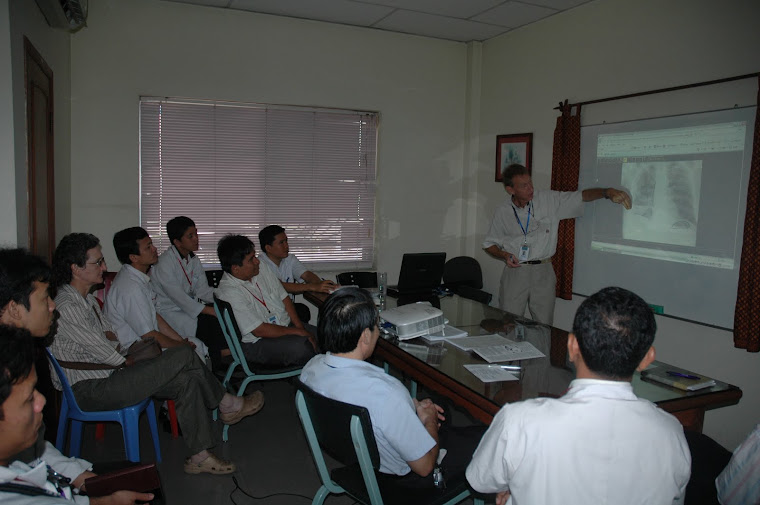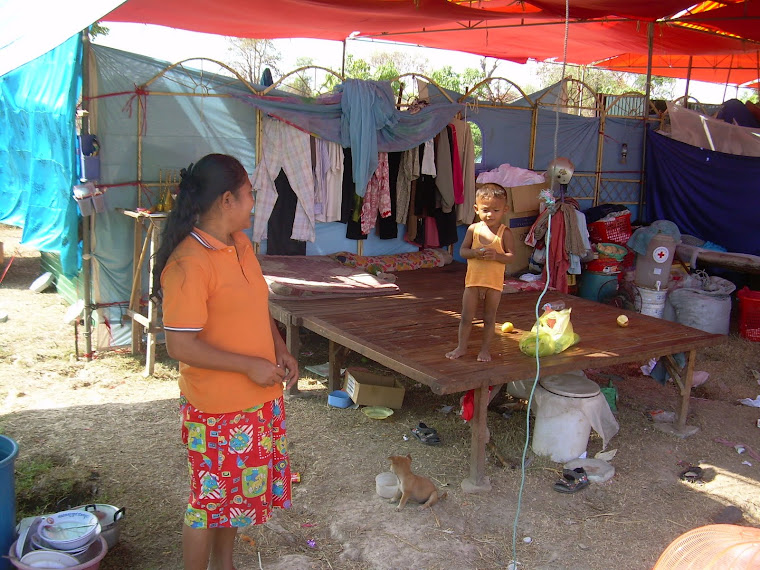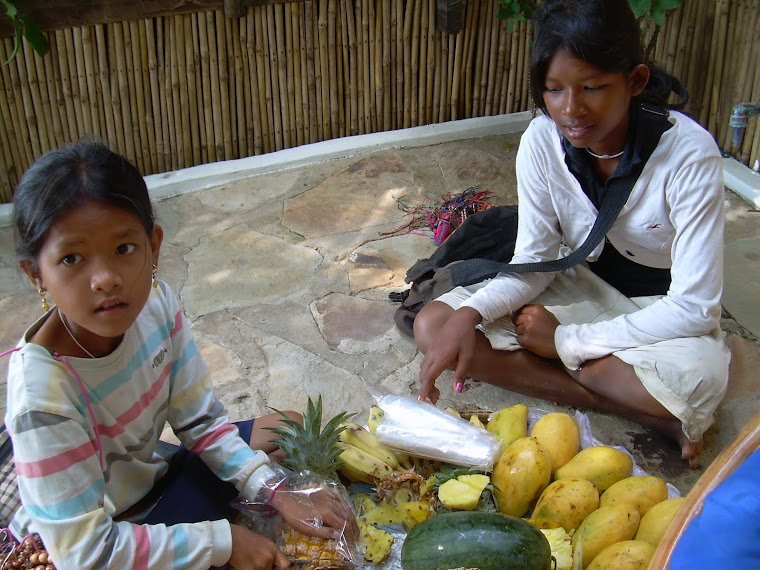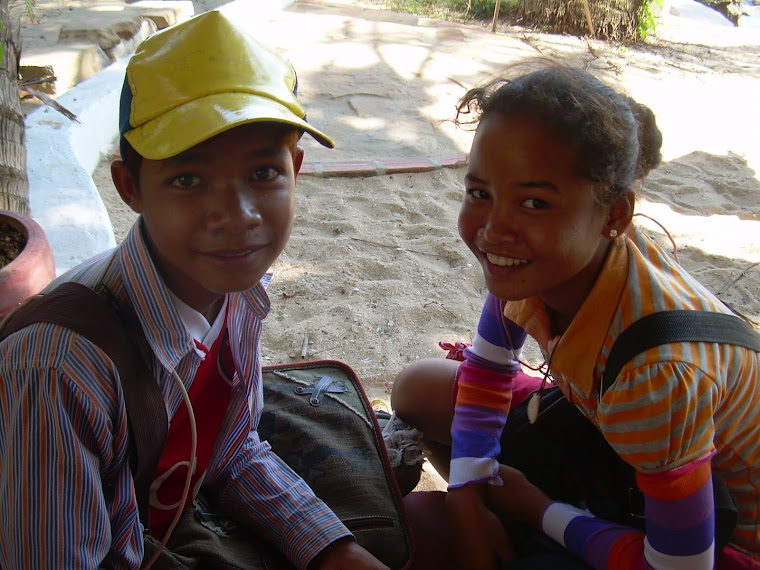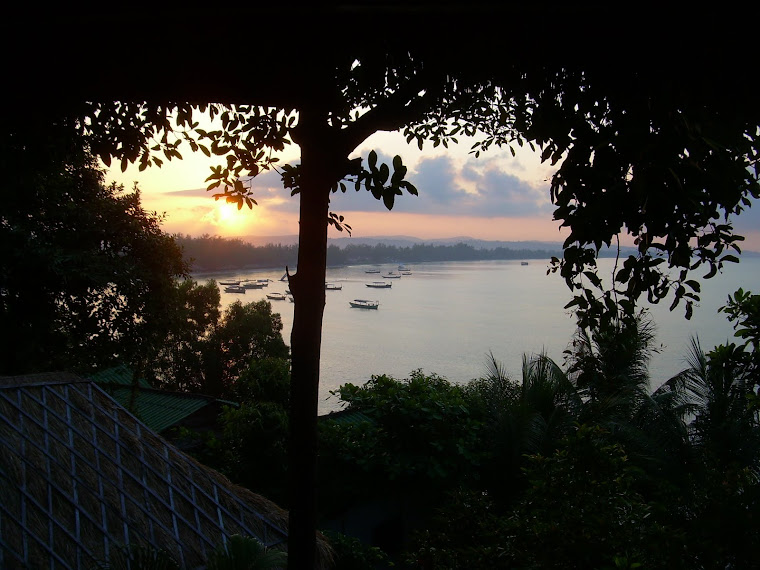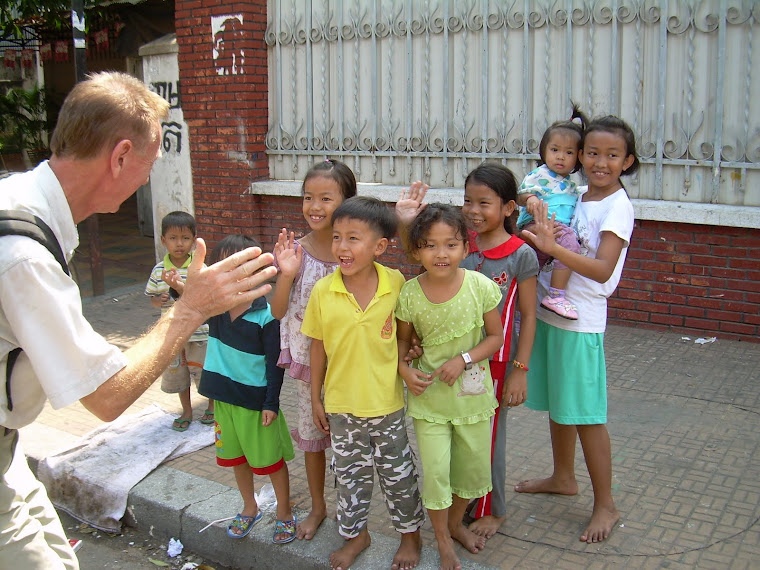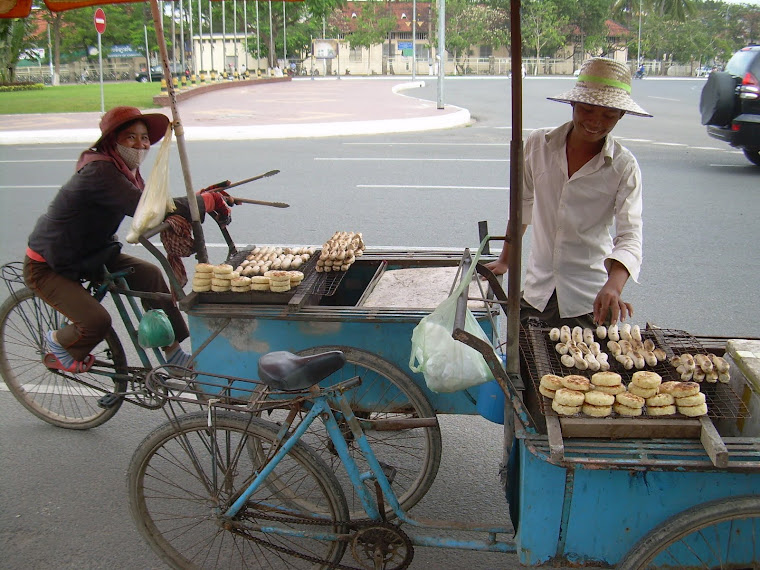
THE MOBILE CLINIC
Handing out food supplements and Michael makes a new friend.
In town, most people live in apartments, some okay, some very run down. Every one has a clothes line on their balcony as warm sunshine is plentiful. Lots of shop owners have an open room on the street, a sort of living room with dark, shiny wooden couches and chairs and almost always a TV set. Shelves of whatever they sell, bread or toys or used auto parts, get pulled in at dark, along with the family moto, then get locked behind a wall of sliding bars.
A family of 4 easily fits on a moto. Not big people, these! Today I saw 5 on a moto- the whole family including the baby in its mother’s arms. Not the safest way to travel, but it’s what they can afford- and that’s if they are lucky!The poorer people often don’t actually have a home- they have a shelter. There is a building going up near our guest house so we have been watching the construction (another whole story, but it involves rickety bamboo scaffolding and 4 stories). The construction crew lives on site- we see them stirring about in the early morning, lighting cooking fires on the first level. We have no idea where they find toilet facilities and probably don’t want to know. I am sure they have a water hose to use for a bucket bath and clothes washing. We see clothes drying on a rope down there.
The tuk-tuk drivers, of which there are many everywhere, sleep in their carriages. As a person with a sorry back, I worry about them! Some have a cushioned platform that they can stretch between the seats, which must help. The best idea I saw was one with a hammock stretched from corner to corner, looked pretty cozy! I worry about mosquitoes biting them all night, though! Their hygiene facilities must be really challenging, but most of them seem clean, neat, and shaven. I see them having soup for breakfast early each morning at sidewalk restaurants, sitting on tiny plastic stools that you might expect at kindergarten. It works for them! They are happily talking and slurping away.
The poorest folks are the ones we have seen out in the provinces. We went on the hospital’s mobile clinic one day and there we saw some pretty sad living conditions. It was a village of people who had been displaced from their slummy area in the city to build a new apartment complex which was unaffordable to them. The government promised apartments for them, but so far that has not happened. They live in a group of lean-to shanties, some covered with plastic tarp, some with sheets. They have platforms to sleep on with all their worldly possessions piled up around them. The mobile clinic workers are frustrated that construction has not started yet on their homes, as the rainy season starts in a couple of months. It looks a lot like the situation in Haiti.
The mobile clinic visits 5 such villages of displaced people and takes medicines to them. There’s a doctor on board to see anyone who is sick. There are a lot of HIV patients among these folks, so the clinic takes them the drugs to keep the disease at bay. They also take a nutrition supplement powder which has a lot of vitamins, minerals, and protein. They say it tastes pretty good- they all made sure they got their packet!
A family of 4 easily fits on a moto. Not big people, these! Today I saw 5 on a moto- the whole family including the baby in its mother’s arms. Not the safest way to travel, but it’s what they can afford- and that’s if they are lucky!The poorer people often don’t actually have a home- they have a shelter. There is a building going up near our guest house so we have been watching the construction (another whole story, but it involves rickety bamboo scaffolding and 4 stories). The construction crew lives on site- we see them stirring about in the early morning, lighting cooking fires on the first level. We have no idea where they find toilet facilities and probably don’t want to know. I am sure they have a water hose to use for a bucket bath and clothes washing. We see clothes drying on a rope down there.
The tuk-tuk drivers, of which there are many everywhere, sleep in their carriages. As a person with a sorry back, I worry about them! Some have a cushioned platform that they can stretch between the seats, which must help. The best idea I saw was one with a hammock stretched from corner to corner, looked pretty cozy! I worry about mosquitoes biting them all night, though! Their hygiene facilities must be really challenging, but most of them seem clean, neat, and shaven. I see them having soup for breakfast early each morning at sidewalk restaurants, sitting on tiny plastic stools that you might expect at kindergarten. It works for them! They are happily talking and slurping away.
The poorest folks are the ones we have seen out in the provinces. We went on the hospital’s mobile clinic one day and there we saw some pretty sad living conditions. It was a village of people who had been displaced from their slummy area in the city to build a new apartment complex which was unaffordable to them. The government promised apartments for them, but so far that has not happened. They live in a group of lean-to shanties, some covered with plastic tarp, some with sheets. They have platforms to sleep on with all their worldly possessions piled up around them. The mobile clinic workers are frustrated that construction has not started yet on their homes, as the rainy season starts in a couple of months. It looks a lot like the situation in Haiti.
The mobile clinic visits 5 such villages of displaced people and takes medicines to them. There’s a doctor on board to see anyone who is sick. There are a lot of HIV patients among these folks, so the clinic takes them the drugs to keep the disease at bay. They also take a nutrition supplement powder which has a lot of vitamins, minerals, and protein. They say it tastes pretty good- they all made sure they got their packet!
But before I close, I must remember to tell you about the not-poor people. They live in very large villas behind high walls with razor wire curled at the top. They often have many cars in their courtyards, which I see on my morning walks, as the gates are often open. The house boys or guards are providing daily washing or dusting to the Lexus 470 SUV's, sometimes Lexus 300, and occasionally the 570, which we had never seen before here. Those require no plates and have curtains as well as very dark windows. As as Michael mentioned last year, they often have "LEXUS" in very large letters on the doors, just in case you weren't sure! I want to take a picture of one, but I am afraid I might be shot...
